What is Klever Coin (KLV) - Complete Overview
Klever Coin (KLV) Calculator
KLV Token Information
Total Supply: 10 Billion KLV
Circulating Supply: 8.88 Billion KLV
Staking APR: 12-16%
Staked Supply: 72% of circulating supply
Staking Rewards Calculator
Estimated Rewards:
$0.00
Based on 14% APR
Token Burn Simulation
Burned Tokens:
0 KLV
Based on 10% of transaction fees being burned
Ecosystem Overview
Klever Wallet: Multi-chain mobile wallet supporting 10,000+ tokens and NFTs
Klever Exchange: Decentralized exchange with low fees
Klever Swap: Autonomous bot system for instant swaps
KDA Platform: Token-launch platform for developers
KFI Governance: Voting rights for protocol upgrades
Quick Summary
- Klever Coin (KLV) is the native utility token of the Klever Blockchain.
- It uses a Delegated Proof‑of‑Stake (DPoS) model and has a total supply of 10billion tokens.
- Over 70% of the circulating supply is staked, yielding 12‑16% APR.
- The ecosystem includes a wallet, exchange, swap bots, and a token‑launch platform (KDA).
- KLV can be bought on major exchanges like KuCoin, Gate.io, and MEXC.
When you hear the name Klever Coin (ticker KLV), you’re looking at the native utility token that powers the Klever ecosystem. Launched in 2020 by Klever Finance, it aims to be more than just a payment coin - it fuels a whole suite of services, from staking to decentralized exchanges.
Understanding the Klever Ecosystem
The Klever Blockchain is a high‑throughput network built for three‑million transactions per second (TPS). Its design focuses on speed, low fees, and interoperability with major chains like Bitcoin, Ethereum, Polygon, and Binance Smart Chain. Because the blockchain runs on a Delegated Proof‑of‑Stake (DPoS) consensus, token holders can become validators by running masternodes, which requires locking up a minimum amount of KLV.
Key Components Powered by KLV
Klever Coin sits at the center of several products:
- Klever Wallet - a multi‑chain mobile app that supports over 10,000 tokens and NFTs. It’s the primary gateway for staking, swapping, and launching new assets.
- Klever Exchange - a decentralized exchange with low fees and built‑in market‑making bots.
- Klever Swap - an autonomous bot system that constantly hunts the best rates across top exchanges, executing swaps in seconds.
- KDA (Klever Digital Assets) - a token‑launch platform that lets developers mint and list their own assets on the Klever Blockchain.
- Klever OS SDK - a software development kit that enables third‑party apps, wearables, and servers to embed wallet functionality directly.
- KFI (Klever Finance Token) - the governance token that gives holders voting rights over protocol upgrades.
Tokenomics and Deflationary Mechanics
KLV has a hard cap of 10billion tokens, with roughly 8.88billion already in circulation. Every on‑chain transaction burns a small slice of the fee, creating a continuous supply‑reduction pressure. This burn‑and‑stake model makes KLV one of the more deflationary crypto assets on the market.
Staking rewards are attractive: depending on lock‑up duration, users earn between 12% and 16% annual percentage rate (APR). As of the latest figures, about 72% of the circulating supply is actively staked through the Klever Wallet, indicating strong community confidence.
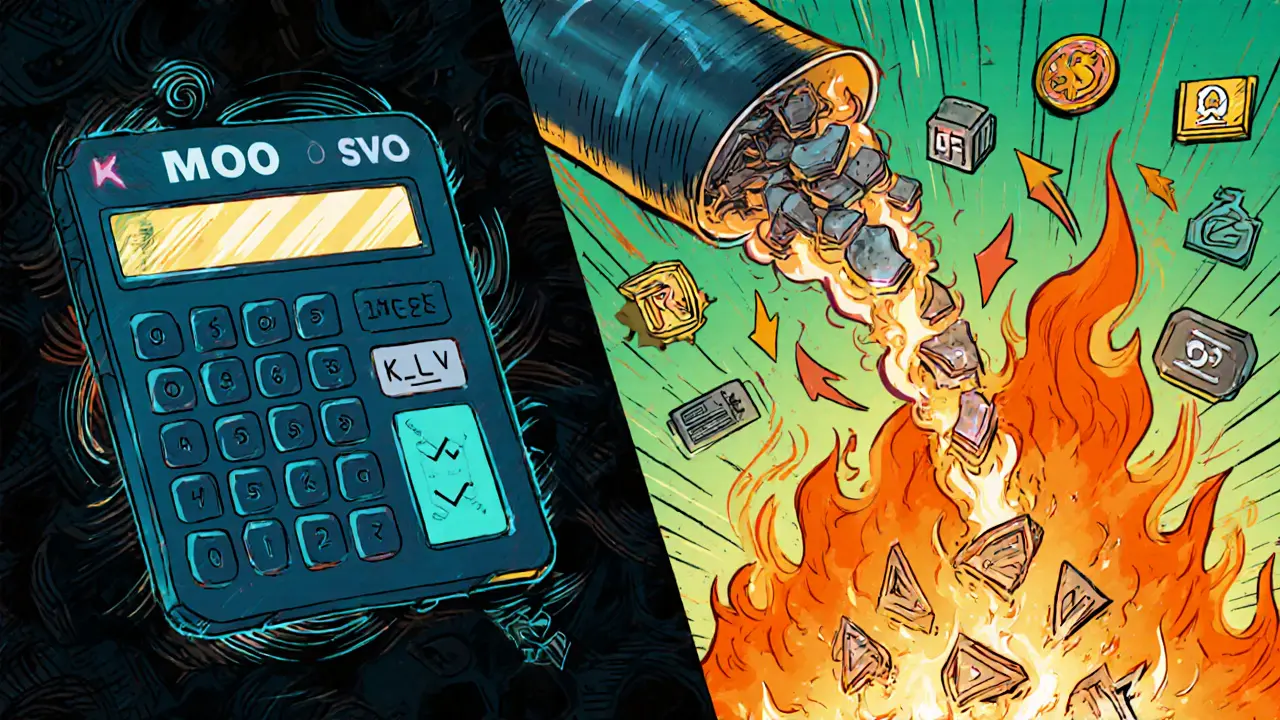
How to Get Started with KLV
- Download the Klever Wallet from the App Store or Google Play.
- Set up a new wallet: write down the 12‑word seed phrase and store it securely offline.
- Buy KLV on a supported exchange (KuCoin, Gate.io, MEXC, or Bitcoin.me) and transfer it to your Klever Wallet address.
- Open the “Stake” tab, choose your desired staking period, and confirm. The app will lock your KLV and start accruing rewards.
- Explore other services - try a quick swap on Klever Swap, or launch a token via KDA if you’re a developer.
The onboarding process generally takes under an hour for basic functions; mastering advanced tools like token launching may require a few days of experimentation.
Security, Governance, and Roadmap
The DPoS system requires validators to hold a meaningful amount of KLV, which aligns incentives and discourages malicious behavior. Regular audits and a bug‑bounty program further harden the network.
Governance is handled through KFI. Holders can propose and vote on protocol upgrades, fee adjustments, or new feature integrations. The current supply of KFI stands at 150,000 with a planned max of 1million by 2040.
Future roadmap items include deeper DeFi integrations (yield farms, lending), expanded cross‑chain bridges, and enhanced NFT marketplace features. While exact dates aren’t public, the team releases monthly updates and maintains an active GitHub repository.
Comparing KLV with Bitcoin and Ethereum
| Metric | KLV | Bitcoin | Ethereum |
|---|---|---|---|
| Launch Year | 2020 | 2009 | 2015 |
| Consensus | Delegated Proof‑of‑Stake | Proof‑of‑Work | Proof‑of‑Stake (post‑Merge) |
| Max Supply | 10B | 21M | No fixed cap |
| Primary Use‑Case | Utility token for an all‑in‑one ecosystem | Store of value | Smart contracts & DApps |
| Staking Yield | 12‑16% APR | None | ~4‑7% APR (varies) |
Common Questions About Klever Coin
Frequently Asked Questions
What wallets support KLV?
The official Klever Wallet is the primary app, but KLV is also compatible with third‑party wallets that allow custom token imports, such as Trust Wallet or MetaMask (via Binance Smart Chain).
How are KLV tokens burned?
Every transaction on the Klever Blockchain incurs a fee; a predetermined portion of that fee is automatically sent to a burn address, permanently removing those tokens from circulation.
Can I earn passive income with KLV?
Yes. By staking KLV through the Klever Wallet or a supported delegator, you can earn 12‑16% APR, depending on lock‑up length and network conditions.
Is KLV a good long‑term investment?
Investment decisions should factor in the token’s deflationary model, high staking participation, and the ecosystem’s growth roadmap. While analysts note strong fundamentals, the crypto market remains volatile, so thorough personal research is essential.
Where can I trade KLV?
KLV is listed on major exchanges like KuCoin, Gate.io, MEXC, and Bitcoin.me. Liquidity is sufficient for most retail traders, and you can move the tokens to your Klever Wallet for staking or swaps.
Whether you’re a newcomer curious about the token or a developer hunting an all‑in‑one blockchain solution, Klever Coin offers a blend of utility, staking rewards, and a rapidly expanding suite of services. Keep an eye on the roadmap updates, and remember that crypto investments always carry risk.
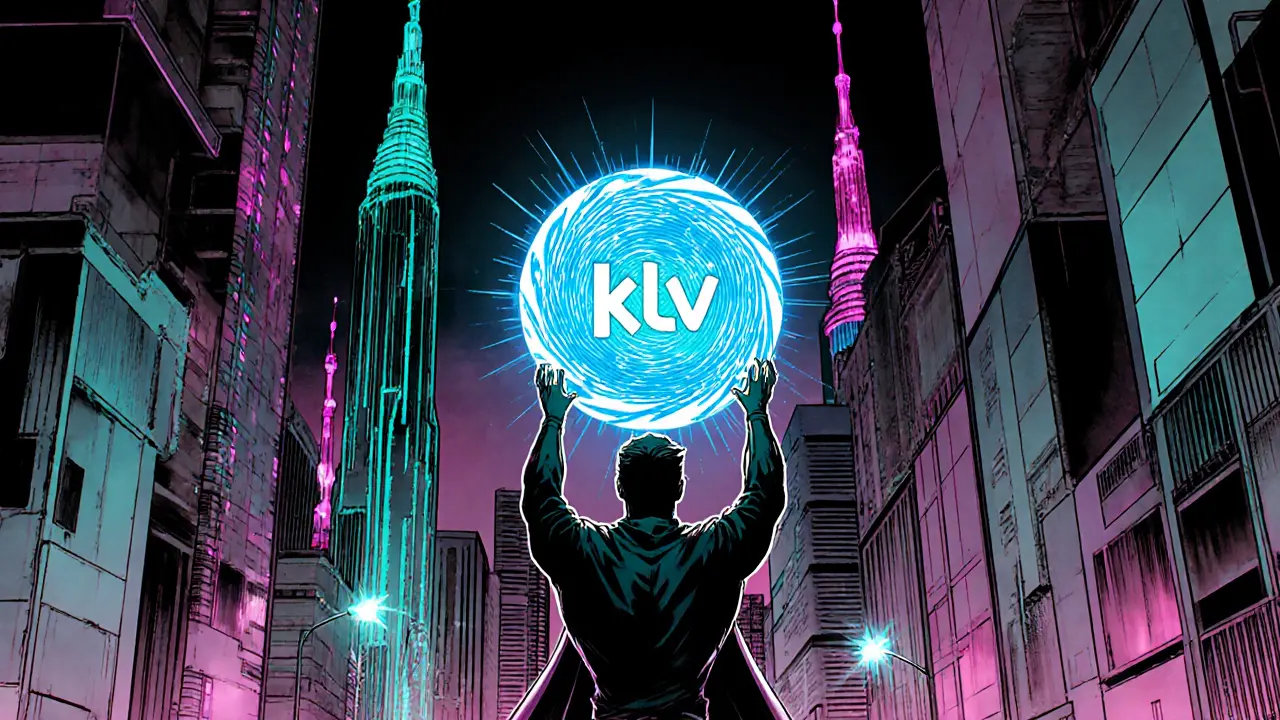
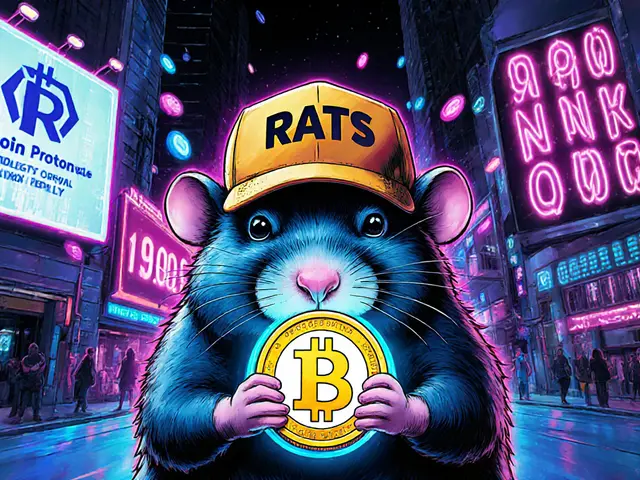
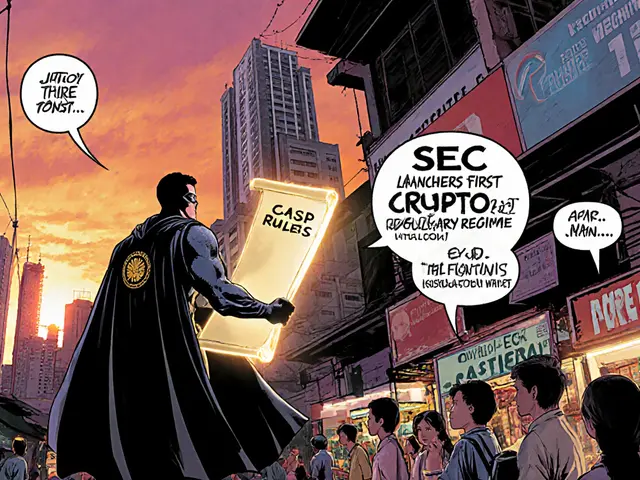


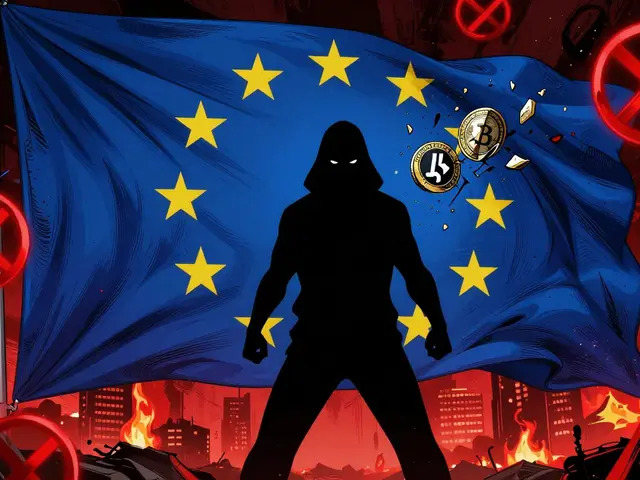
16 Comments
John Kinh
October 18 2024Looks like another overhyped token 🚀.
Nathan Blades
October 23 2024Staking KLV might actually give you a modest passive income if you play it right.
The 12‑16% APR looks decent compared to many DeFi projects that promise sky‑high yields.
Just make sure you lock your tokens for a period you’re comfortable with, because early withdrawal penalties can bite.
Diversifying across a few solid platforms can smooth out the volatility you’ll inevitably face.
Overall, it’s a tool-use it wisely and you’ll reap steady rewards.
Debby Haime
October 26 2024Hey folks, if you’re thinking about diving into KLV, remember the basics: a solid wallet, low‑fee exchange, and a clear staking plan are your foundation.
Don’t chase the hype; look at the APR and the actual lock‑up terms.
Start small, see how the rewards compound, then decide if you want to go deeper.
katie littlewood
October 29 2024Klever Coin tries to position itself as the Swiss‑army knife of the crypto ecosystem, wrapping a wallet, exchange, swap, launchpad, and governance token all under one roof.
That ambition is admirable, but it also raises the question of whether they can truly excel at each component without spreading themselves too thin.
The tokenomics, with a 10 billion total supply and only about 8.9 billion circulating, suggest there’s still a sizable reserve that could be released later, potentially diluting value.
A 72 % staking participation rate indicates strong community confidence, yet such high lock‑up percentages can also signal limited liquidity for everyday traders.
Their staking APR of 12‑16 % is competitive, especially when you consider the low transaction fees on the Klever Exchange.
However, APRs in the crypto world are often dynamic, and a sudden market shift could see those numbers tumble faster than a poorly timed meme coin launch.
The burn mechanism, which claims to destroy a portion of transaction fees, is a nice deflationary tweak but its impact is hard to quantify without transparent on‑chain data.
From a security standpoint, the multi‑chain wallet supports over 10,000 tokens and NFTs, which is impressive, yet every additional integration expands the attack surface.
User experience seems smooth, with an intuitive interface that masks the underlying complexity, a factor that could attract newcomers who are wary of tangled DEX layouts.
On the flip side, seasoned traders may miss advanced features like deep order book analytics that more specialized platforms provide.
Klever’s governance model, KFI, grants voting rights, but the real influence of token holders often depends on voter turnout, which historically can be disappointingly low.
If the community remains active and the roadmap is delivered on time, KLV could cement itself as a utility hub rather than just another speculative token.
Conversely, any delays or security incidents could erode trust faster than a flash‑crash on a centralized exchange.
In summary, the project blends utility and incentive structures in a way that feels both innovative and risky, a classic double‑edged sword.
Potential investors should weigh the breadth of features against the depth of execution before committing capital.
Finally, keep an eye on how the token’s supply dynamics evolve, because that will ultimately dictate long‑term price pressure.
Jenae Lawler
October 30 2024While the promotional veneer is polished, one must question the sustainability of such an expansive suite without rigorous audits.
Elevated expectations may soon clash with operational realities.
Chad Fraser
October 31 2024Yo, the Klever wallet’s look is slick and the exchange fees are chill – perfect for anyone just getting started.
Give it a spin, and you’ll see why many newbies gravitate there.
Parker Dixon
November 1 2024I totally get the excitement around KLV, but let’s keep the conversation grounded.
Remember, staking rewards are only one piece of the puzzle; security, liquidity, and community engagement matter just as much.
Stay curious, do your own research, and don’t let FOMO dictate your moves.
Bobby Ferew
November 2 2024The protocol’s fee‑burn model sounds nice on paper, yet the actual on‑chain burn metrics remain opaque.
Without transparent analytics, it’s a jargon‑laden promise that could mask underlying inefficiencies.
celester Johnson
November 3 2024One could argue that the perpetual chase for higher APRs reflects a deeper existential yearning for certainty in an inherently uncertain market.
Yet, certainty is a mirage; the only constant is volatility.
Prince Chaudhary
November 4 2024KLV offers a comprehensive suite, and for those who value a one‑stop solution, it’s worth a closer look.
I avoid emojis to keep the focus on substance.
Mark Camden
November 4 2024While diversification is commendable, allowing a single token to dominate multiple financial functions is a moral hazard that could centralize power.
Investors must consider the ethical ramifications of such consolidation.
Evie View
November 4 2024KLV’s hype train is moving too fast; anyone jumping on now risks being left in the dust when the tokenomics adjust.
Sidharth Praveen
November 5 2024Optimism is great, but balance it with data – keep tracking the burn rates and staking participation to gauge real momentum.
Sophie Sturdevant
November 5 2024From a technical standpoint, the integration of cross‑chain bridges within Klever’s architecture is a sophisticated move that can lower friction for asset swaps.
However, such complexity demands rigorous testing to prevent protocol‑level exploits.
Somesh Nikam
November 5 2024Indeed, the cross‑chain capabilities are promising, but I would advise a phased adoption strategy – start with low‑value transfers, monitor for anomalies, then scale up.
Jan B.
November 5 2024Good overview, concise points.